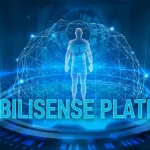Have you been on a never-ending quest to find relief from trauma? Eye Movement Desensitization and Reprocessing (EMDR) therapy strength is the lifeline you’ve been seeking. EMDR is a highly effective, evidence-based method designed to aid in the healing of traumatic memories. EMDR is a structured, eight-phase treatment that addresses the memories of traumatic events to reduce their emotional impact. The phases include:
- History-taking – Gathering information about your past and current issues.
- Preparation – Learning coping strategies.
- Assessment – Identifying specific memories to target.
- Desensitization – Using eye movements or other bilateral stimulation to process memories.
- Installation – Reinforcing positive beliefs.
- Body Scan – Checking for residual physical tension.
- Closure – Ensuring stability at the end of each session.
- Reevaluation – Assessing progress over time.
Through this structured approach, EMDR aims to transform how traumatic memories are accumulated in the brain, making them less distressing. This blog will explore how EMDR therapy can help enhance your healing journey.
1. Enhances Self-Awareness
One critical benefit of EMDR therapy is the increase in self-awareness it can provide. During EMDR therapy sessions, individuals often gain profound insights into their behaviors, thoughts, and emotional patterns. This newly acquired self-awareness can empower clients to make more informed decisions and changes in their daily lives.
By diving deep into unresolved emotions and experiences, EMDR brings clarity to how past events shape our thoughts, behaviors, and emotional responses. Here’s how EMDR therapy enhances self-awareness as part of your healing journey:
Unveiling Root Causes
EMDR allows you to uncover the underlying causes of your emotional reactions. By reprocessing traumatic memories, you begin to understand how certain triggers are connected to unresolved events from the past. This newfound awareness empowers you to respond more mindfully in the present.
Understanding Emotional Patterns
As you progress through EMDR sessions, you start to notice recurring emotional patterns. These patterns often reflect deep-seated beliefs or coping mechanisms. Recognizing these allows you to break free from repetitive negative thinking or behavior cycles.
Connecting Mind and Body
EMDR encourages the integration of both cognitive and somatic awareness. As you reprocess traumatic memories, you may experience physical sensations tied to emotions. This connection between mind and body promotes a deeper understanding of how stress, anxiety, and unresolved trauma impact your overall well-being.
Cultivating Mindfulness
The process of self-reflection in EMDR enhances mindfulness by encouraging you to stay present with your emotions without judgment. This practice fosters a deeper and close connection with yourself and builds the foundation for emotional regulation and resilience.
Clarifying Your Narrative
EMDR helps reframe traumatic experiences, allowing you to integrate them into a cohesive personal narrative. Instead of feeling controlled by past events, you gain clarity on how they’ve influenced you, fostering a more empowered and self-aware mindset moving forward.
Through EMDR therapy, enhanced self-awareness becomes a powerful tool for personal growth. You’ll find greater peace and a renewed sense of control over your healing journey as you better understand yourself.
2. Reduces Symptoms of Trauma
Research has shown that EMDR is highly effective in alleviating symptoms of PTSD and other trauma-related conditions. A study disseminated in the Journal of Traumatic Stress found that 77% of individuals with PTSD who underwent EMDR therapy showed significant improvement. This therapy focuses on targeting disturbing memories and reprocessing them to diminish their emotional charge. Using a structured eight-phase approach, EMDR encourages the brain to naturally reprocess traumatic memories, similar to during Rapid Eye Movement (REM) sleep.
During EMDR sessions, clients recall traumatic experiences while simultaneously engaging in bilateral stimulation, such as guided eye movements or taps. This process facilitates the brain’s rational processing and integration of these memories. As a result, the intense emotional reactions often triggered by these memories are significantly reduced or even eliminated.
Clients frequently report a decrease in PTSD symptoms, such as nightmares, flashbacks, and severe anxiety, after undergoing EMDR therapy. Furthermore, the reduction of symptoms is not merely a temporary relief but often a profound shift in how someone perceives and reacts to their traumatic experiences. As EMDR continues to gain recognition and support within the therapeutic community, many individuals find it to be a transformative tool in their journey toward healing and recovery.
3. Promotes Emotional Regulation
EMDR isn’t just about processing traumatic memories; it’s also about teaching you how to regulate your emotions. Emotional regulation refers to your ability to manage and respond to intense emotional experiences in a balanced and healthy way. For individuals who have experienced trauma, emotions can feel overwhelming, unpredictable, or even out of control. This dysregulation often manifests as anxiety, depression, anger, or emotional numbness, making it difficult to process and heal from past events. How EMDR Helps with Emotional Regulation:
Reprocessing Traumatic Memories
EMDR works by helping you process and reframe traumatic memories to reduce their emotional intensity. Through conducted eye movements or other bilateral stimulation, EMDR desensitizes the emotional impact of distressing experiences, allowing your brain to categorize them as past events rather than ongoing threats. This reduction in emotional charge aids in improving emotional regulation.
Desensitization to Triggers
Often, traumatic experiences create emotional triggers that can cause heightened responses, such as panic attacks or extreme sadness. EMDR helps to desensitize these triggers, making it easier to navigate emotionally charged situations without feeling overwhelmed.
Enhancing Coping Mechanisms
During EMDR therapy, patients often identify and reinforce positive beliefs and coping mechanisms. These strategies empower someone to manage their emotions better to reduce, leading to more effective emotional regulation in daily life.
Building Resilience
As you work through difficult memories in EMDR, you develop greater emotional resilience. Instead of being controlled by fear, anger, or sadness, you learn to respond more thoughtfully and calmly in triggering situations.
4. Improves Coping Mechanisms
In addition to emotional regulation, EMDR equips you with healthier and fit ways to cope with stress and trauma triggers. For example, replacing avoidance behaviors with constructive activities such as exercise or creative pursuits can significantly improve your quality of life. Over time, these new coping mechanisms become second nature, helping you handle life’s challenges more resiliently.
EMDR (Eye Movement Desensitization and Reprocessing) therapy is a powerful tool for healing past trauma and emotional distress. One significant way it enhances your journey is by improving your coping mechanisms.
- During EMDR sessions, the EMDR therapist guides you through recalling distressing memories while simultaneously focusing on external stimuli, often in the form of guided eye movements. This process helps desensitize painful emotions associated with the memories and encourages healthier reprocessing.
- As a result, you gain a more vital ability to cope with emotional triggers in everyday life. Instead of feeling overwhelmed, EMDR empowers you to manage stress, anxiety, or trauma more effectively. It rewires how your brain processes past events, shifting your reaction from emotional reactivity to calm, mindful responses.
This enhanced emotional regulation makes you feel more in control and resilient, improving your mental health and overall well-being. By working through the root of the issues, EMDR helps you develop lasting coping mechanisms that support your healing journey. Holistic Mental Health Therapy further explains how EMDR can support and enhance recovery.
Moreover, EMDR therapy also helps build self-awareness and self-care. By exploring the underlying causes of emotional distress, you better understand yourself and what you need to promote healing. This increased understanding allows you to set healthy boundaries, prioritize self-care practices, and make positive changes in your life.
5. Strengthens Self-Esteem
Eye Movement Desensitization and Reprocessing (EMDR) therapy is known for its profound impact on trauma recovery, but one of its lesser-known benefits is its ability to strengthen self-esteem. When working through past traumas or negative beliefs, EMDR helps individuals replace self-doubt and feelings of inadequacy with more positive and empowering self-perceptions. Here’s how it works:
Rewriting Negative Core Beliefs
Many people struggle with deeply ingrained beliefs like “I’m not good enough” or “I’m unworthy.” These beliefs often stem from past trauma. Through EMDR therapy, clients can target and reprocess these negative beliefs, allowing the brain to form new, healthier connections. This results in the gradual replacement of negative self-talk with affirming thoughts.
Reclaiming Personal Power
EMDR encourages individuals to face their past and process unresolved emotions. As clients revisit challenging experiences, they gain a sense of mastery over their memories, which helps them regain a feeling of control and empowerment. This newfound confidence plays a significant role in boosting self-esteem.
Building Resilience
By helping individuals confront and resolve emotional pain, EMDR therapy fosters emotional resilience. Over time, this resilience contributes to a more positive self-image, as clients recognize their ability to navigate life’s challenges with strength and grace.
Shifting from Victim to Survivor
Many people undergoing EMDR therapy come to see themselves not as victims of their past, but as survivors. This mindset shift is crucial in building a sense of self-worth and personal value. By embracing their strength in overcoming adversity, clients experience a boost in self-esteem.
Supporting Positive Self-Reflection
EMDR sessions often involve reflecting on positive experiences and future goals, encouraging clients to visualize a life beyond their trauma. This positive self-reflection reinforces the idea that they deserve happiness, further enhancing self-esteem.
EMDR therapy does more than heal trauma; it builds a solid foundation for self-esteem. By helping individuals rewrite negative beliefs, reclaim personal power, and shift their mindset, EMDR empowers them to view themselves more positively. As a result, clients leave therapy with a deeper sense of healing and a greater sense of self-worth.
6. Encourages Resilience
Understanding eye movement Desensitization and Reprocessing (EMDR) therapy is a powerful tool that helps individuals heal from trauma, anxiety, and emotional distress. One of the most significant benefits of EMDR therapy is its ability to encourage resilience, assisting people to build emotional strength and adapt to life’s challenges.
When we face trauma or distress, our natural coping mechanisms can become overwhelmed, leaving us stuck in a cycle of negative emotions. EMDR works by processing and re-framing these disturbing memories, allowing the brain to heal naturally. This process doesn’t just alleviate the symptoms of trauma; it fosters a sense of resilience that empowers individuals to handle future stressors more effectively.
Through guided eye movements and focused reflection, EMDR therapy helps rewire neural pathways associated with painful memories. As clients revisit and process these experiences, they notice a shift in their emotional responses. Over time, this builds a foundation of mental fortitude, enabling them to approach future challenges with confidence and strength.
EMDR doesn’t just address past trauma; it equips individuals with the tools needed to manage present and future stressors. By encouraging resilience, EMDR therapy helps overcome existing emotional barriers and prepares the mind to bounce back more quickly when new difficulties arise.
7. Testimonials and Next Steps
Eye Movement Desensitization and Reprocessing (EMDR) therapy is increasingly recognized as a powerful tool in trauma recovery and mental health treatment. This unique therapy helps individuals process traumatic experiences, reduce emotional distress, and foster long-lasting healing. But what does this mean for your healing journey? If you’re ready to explore how EMDR therapy can enhance your healing journey, consider contacting a certified EMDR therapist. Here’s how to get started:
- Research Certified Therapists: Look for therapists with specific training in EMDR through reputable organizations.
- Schedule a Consultation: Many therapists offer free consultations, during which you can discuss your goals and determine whether EMDR is the right fit.
- Commit to the Process: Healing takes time, but by committing to EMDR, you can take meaningful steps toward recovery.
Let’s explore how EMDR therapy can make a difference, illustrated by real-life testimonials and the steps you can take to begin or enhance your therapy experience.
Processing Trauma in a Safe Space
EMDR offers a structured environment where individuals can work through difficult memories without being overwhelmed. By focusing on eye movements or other forms of bilateral stimulation, EMDR helps to rewire how the brain processes trauma. One client shared, “I felt safe and in control. EMDR allowed me to revisit painful memories in a way that didn’t retraumatize me.”
Gaining New Perspectives
As the therapy progresses, many clients report a shift in their thinking about past events. What once felt all-consuming becomes more manageable. “After just a few sessions, I noticed I no longer felt paralyzed by my past. EMDR changed how I view my trauma,” shared another participant.
Quicker Results Compared to Traditional Therapy
Eye Movement Desensitization and Reprocessing (EMDR) is widely recognized for its ability to help individuals process trauma and emotional distress. However, innovations in EMDR practices have introduced approaches that yield faster results than traditional methods, making therapy more efficient for clients seeking immediate relief.
- Streamlined Session Structure: Traditional EMDR therapy often involves extensive preparation phases, such as building rapport, creating a safe space, and developing coping mechanisms. While essential, these steps can lengthen the overall process. Modern adaptations have streamlined these phases by integrating mindfulness and resource-tapping techniques, enabling clients to progress more quickly.
- Focused Trauma Processing: In traditional EMDR, clients may address a range of past experiences over multiple sessions. Quicker methods prioritize one or two specific traumas, allowing for targeted intervention and faster resolution. By narrowing the focus, therapists can guide clients to reprocess distressing memories more efficiently.
- Use of Advanced Tools and Technology: Innovative tools, such as virtual reality or app-based EMDR aids, can accelerate the reprocessing phase. These technologies enhance the bilateral stimulation process, reducing the time it takes to achieve therapeutic breakthroughs.
- Tailored Techniques for Immediate Impact: Some therapists now employ intensive EMDR sessions, which condense weeks of traditional therapy into a single day. These sessions involve extended bilateral stimulation and intensive processing, providing clients with immediate relief. This approach can be particularly effective for those experiencing acute distress or time-sensitive issues.
- Collaborative Therapeutic Relationship: While traditional EMDR relies heavily on the therapist guiding the client through the reprocessing process, newer techniques emphasize collaboration and empowerment. Clients are encouraged to take an active role in their healing journey, making it more efficient and effective.
Conclusion
EMDR therapy offers a transformative journey for individuals struggling with trauma. As we explored, this therapeutic approach provides profound benefits, from alleviating trauma symptoms and enhancing emotional regulation to strengthening self-esteem and encouraging resilience. The real-life change seen through testimonials highlights the potential for genuine healing and empowerment. By choosing EMDR therapy, you’re taking a proactive step towards reclaiming control over your life and experiencing enduring well-being. If you’ve been contemplating this path, now is the time to connect with a certified therapist and embark on your healing journey. EMDR is not just a therapeutic option; it’s a gateway to a brighter, more resilient future.







